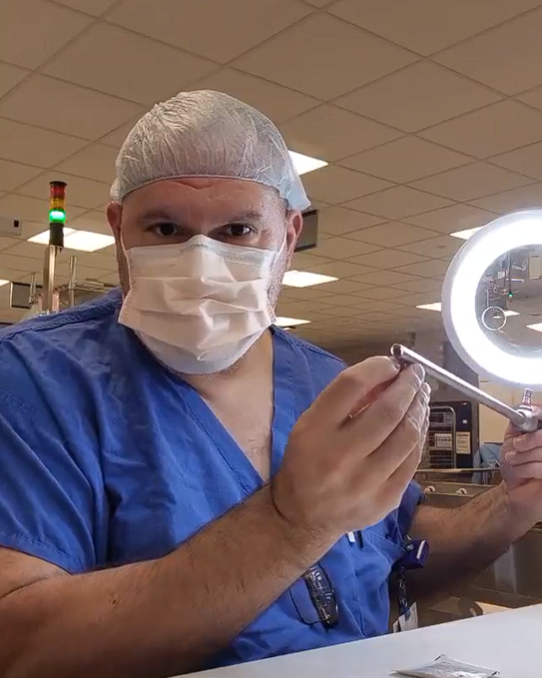When Endoscope Reprocessing Fails: A Deep Dive into Medical Mishaps and Preventative Measures
Ensuring that endoscopes are thoroughly cleaned is crucial for preventing infections in healthcare environments. If things go off track, it can be quite serious for both patients and medical facilities. Let's explore the essential parts of endoscope cleaning, what can happen if things go wrong, and real-life examples that show why careful practices are so crucial.

Understanding Endoscope Reprocessing
Endoscope reprocessing is essential for patient safety and maintaining the functionality of these reusable medical devices. The process includes thorough cleaning to remove contaminants like organic material using water, brushes, and enzymatic detergents, followed by high-level disinfection (HLD) to eliminate most pathogenic microorganisms, except large numbers of bacterial spores typically using liquid chemicals or wet pasteurization.
Classified as semi-critical devices under the Spaulding Classification Scheme, reusable flexible endoscopes come into contact with mucous membranes or nonintact skin, posing a high risk of infection. To reduce this risk, endoscopes must be cleaned and disinfected after every use—or ideally sterilized if possible.
Why Is Proper Reprocessing Critical?
Imagine using a paintbrush that hasn’t been fully cleaned. Leftover paint—or in this case, organic residues and germs—can ruin the next masterpiece. Similarly, a poorly cleaned endoscope can harbor bacteria, putting the next patient at risk. With the growing number of endoscopies performed worldwide, strict reprocessing protocols are vital to ensure patient safety and high-quality care.
The reprocessing steps in more detail include:
- Point-of-Use Treatment: Pre-cleaning immediately after the procedure.
- Leak Testing: Ensuring the device is intact. Learn about the importance of leak testing.
- Manual Cleaning: Using appropriate detergents and tools to remove bioburdens.
- Automated Cleaning: Using an automated endoscope reprocessor (AER) for thorough cleaning and HLD.
- Drying and Storage: Properly drying and storing the endoscope to prevent contamination.
Every step in this process plays an important role in safeguarding patient health.
Risks When Reprocessing Goes Wrong
Endoscopes are utilized in body cavities that are densely populated with microorganisms, which makes them sensitive to contamination by blood, body fluids, and other infectious materials. If reprocessing is delayed or not conducted correctly, these biological burdens can attach to the surfaces of the endoscope, diminishing the effectiveness of future cleaning efforts.

Common errors include:
- Delayed or insufficient cleaning.
- Failure to sterilize accessory equipment.
- Use of incorrect disinfectants.
- Improper drying or storage.
These errors can lead to the transmission of serious infections such as HIV, hepatitis, and carbapenem-resistant Enterobacteriaceae (CRE).
Real-World Cases

Seattle Outbreak (2012–2014): Over 30 patients in Seattle contracted antibiotic-resistant bacteria, including C.R.E., through duodenoscopes, with 11 fatalities reported, though many of those affected were already critically ill.
Legacy Mount Hood Medical Center (July 2023): Over 2,200 patients were potentially exposed to HIV and hepatitis B and C due to lapses in infection control practices. An anesthesiologist’s failure to follow procedures highlighted the devastating impact of human error.
Pseudomonas aeruginosa Detection (July 2023): Three patients’ bile tested positive for this bacterium after using the same duodenovideoscope. The root cause was suspected to be improper bedside washing, emphasizing the importance of following procedural guidelines.
Vanderbilt University Medical Center (October 2023): Improper administration of a solution through an endoscope raised concerns about patient safety, though the risk was deemed low. This incident underscored the need for meticulous endoscope handling.
CRE Outbreak (September 2023): Six patients developed CRE infections after being examined with the same gastrointestinal videoscope, which had a scratch harboring bacteria. Despite following the cleaning protocol, the damage to the scope facilitated contamination.
Consequences for Patients and Hospitals
For Patients:
- Exposure to infectious agents like HIV, hepatitis, and CRE.
- Serious health complications or death.
- Psychological distress from potential life-threatening infections.
- Extensive follow-up testing and treatments.
For Hospitals:
- Reputational damage and loss of patient trust.
- Legal and financial repercussions, including lawsuits and fines.
- Operational disruptions during investigations and retraining.
- Increased regulatory scrutiny and stricter compliance requirements.
Enhancing Endoscope Safety
The intricate design and delicate materials of flexible endoscopes make their cleaning challenging. However, automated endoscope reprocessors (AERs) can improve adherence to recommended cleaning steps. To reduce risks, healthcare facilities must:
- Invest in staff training to minimize human errors.
- Regularly inspect and maintain endoscope equipment.
- Adhere to updated guidelines and protocols.
The Role of Dovideq's LeakControl in Risk Mitigation
One key innovation in enhancing endoscope reprocessing is our LeakControl, an advanced automated air leak tester. LeakControl integrates effortlessly into existing workflows, ensuring endoscope integrity and elevating patient safety standards. By adopting innovative tools like this, healthcare facilities can mitigate risks, enhance infection control, and protect both patients and their reputation.
Don’t let reprocessing errors compromise patient care or your facility's reputation. Equip your team with the right tools to ensure thorough and effective endoscope reprocessing. Discover how Dovideq's LeakControl can streamline your workflow, minimize risks, and elevate safety standards.
Want to see if LeakControl would fit your process? Schedule a quick online demo with us!👇👇
Have thoughts or questions about endoscope reprocessing? Leave a comment below—we’d love to hear from you!


